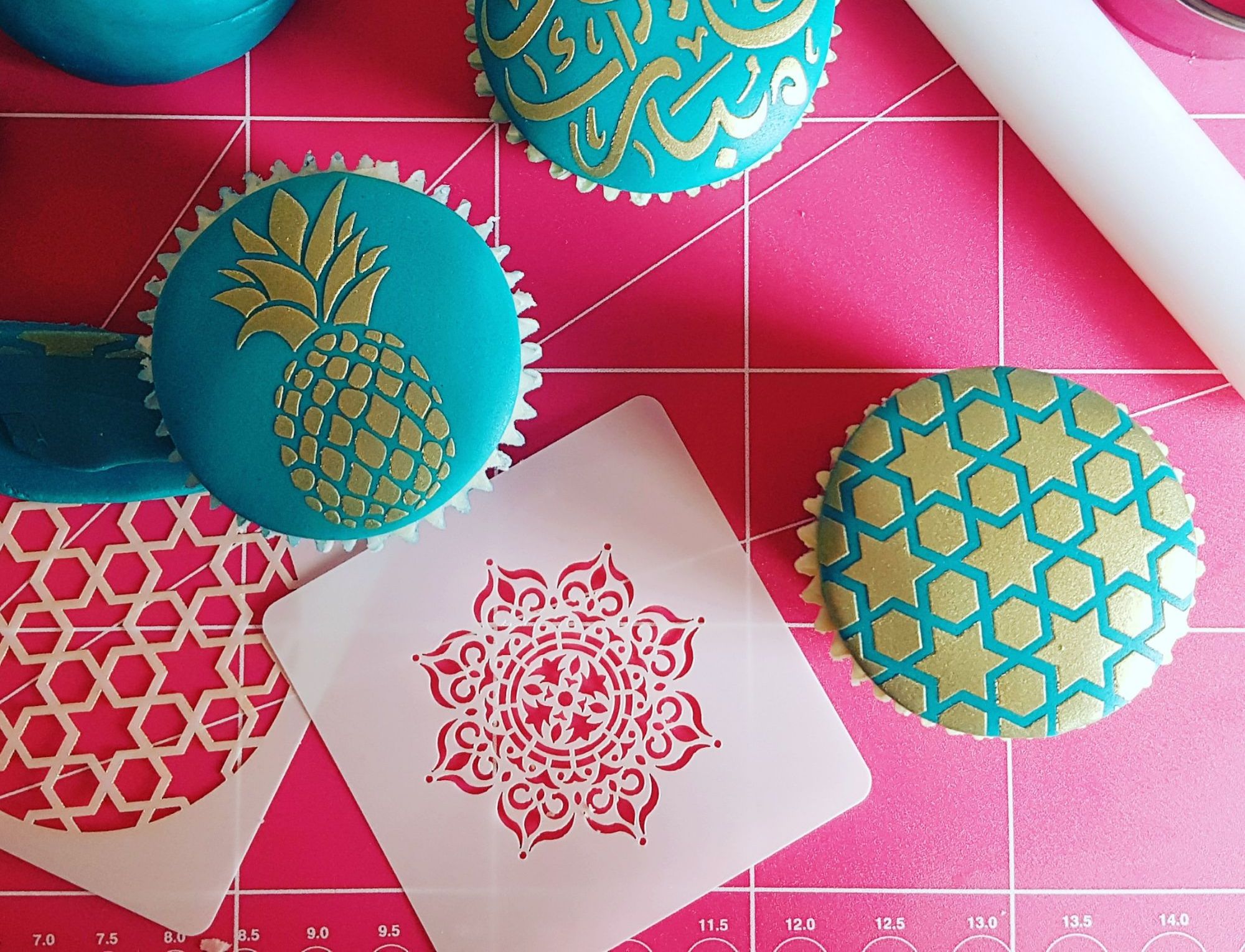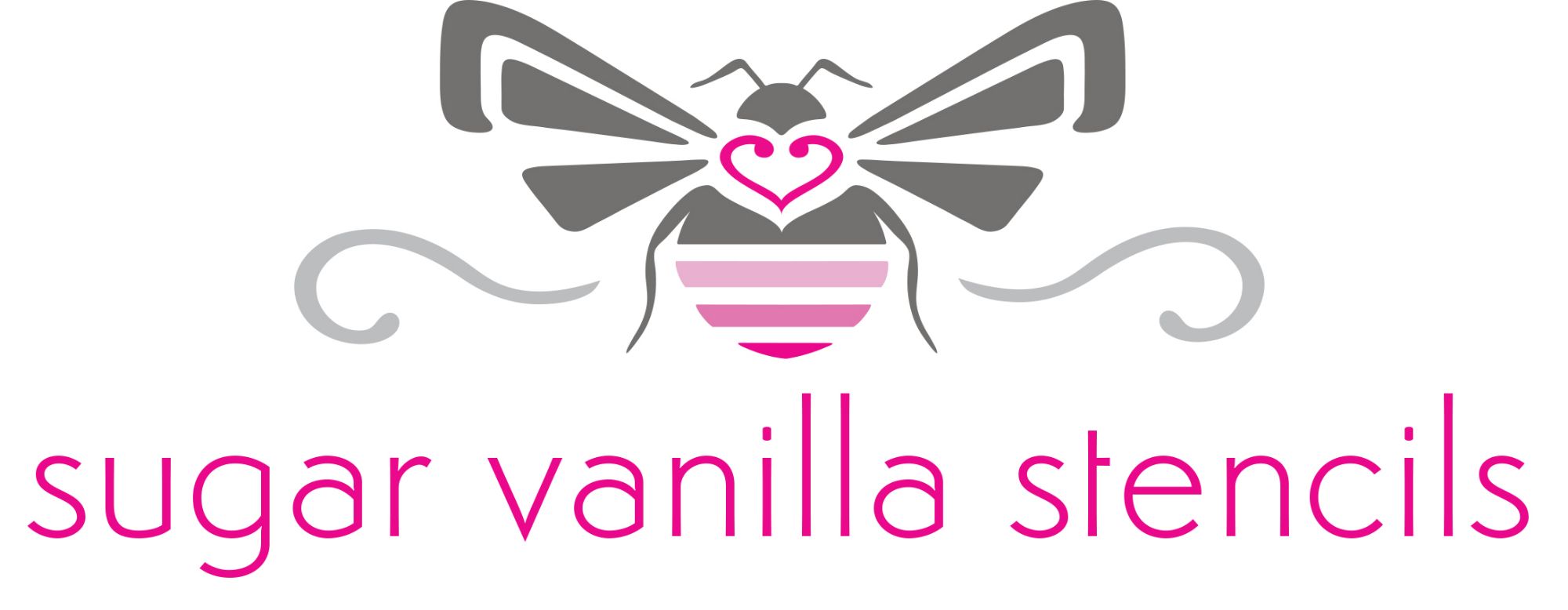Getting Started with Stencils to Decorate Cupcakes, Cookies, Cakes and more
What exactly is a stencil?
Stencils have been used in art for centuries. Basically it's a template to create a design or pattern onto a surface. At it's simplest a stencil is a thin sheet with a pattern cut out of it, which is then used to replicate the design onto a surface by applying paint or ink through the stencil gaps. One of the most famous artists commonly using stencils today is Banksy.
Cake decorating stencils are exactly the same as all other stencils, but differ in that they are cut from food safe plastic and the sizes and designs are generally smaller.
Sugar Vanilla Stencils' stencils are laser cut on thin, but robust, food safe plastic. This allows them to not only be rigid enough to hold the design elements and give a crisp edge, but flexible enough to shape around cakes or hold in place.

What can I stencil with? And on what?
It can be confusing to know what you can stencil with and what you can stencil on to. For example do you use dust, paint, an airbrush to stencil? What should your cake be covered in? What about cupcake toppers? Below is a really simple guide to the most common ways. Though don't be scared to experiment!
Sugarpaste (fondant)
You can use lustre dusts, royal icing, edible paints or an airbrush on sugarpaste. Buttercream and ganache will work as well.
Royal Icing
You can stencil onto set royal icing using more royal icing, edible paints or an airbrush. You cannot use lustre dusts or buttercream.
Buttercream
Buttercream needs to be firm to stencil on, so chill your cake beforehand. You can use buttercream or airbrush paints to stencil.
Chocolate / Ganache
To stencil on chocolate you will need either more chocolate, candy melts or ethanoyl based airbrush colours. You can also stencil onto set ganache.
Have a question?
Hopefully I've covered the basics for you in the sections above, but if you still have any questions, please do get in touch via the form on the Stencil 101 page.
